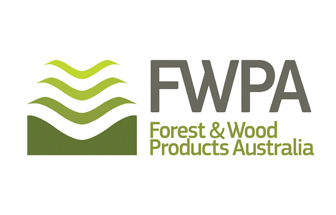RUSSIA’S BAN ON SOFTWOOD LOG EXPORTS
WILL HAVE BIG IMPACT ON GLOBAL MARKETS
Stora Enso has established a new forest division to manage its expanded Swedish forest assets. The new division will include the recently-acquired Bergvik Skog Väst AB and its 41% share of Tornator with the majority of its forest assets located in Finland.
RUSSIA’S proposed log export ban in 2022 will have a far-reaching impact on global forest product markets – including Australia.
Australian traders have been sourcing sizeable volumes of Baltic pine and white spruce from Russia and other European countries and Finnish wood goliath Stora Enso has been importing Australian-compliant red Baltic pine directly into the home market to fill the gap in an ever-narrowing supply of local softwoods.
The origins of timbers from various Baltic countries such as Lithuania are difficult to track and their grading and treatment in Australia remains a challenge.
Russia exported 15 million cub m of logs in 2020, accounting for almost 12% of globally traded roundwood. Much of this trade may come to a halt in January next year when a new law proposed by Russia’s president will ban the export of softwood logs and high-value hardwood logs.
According to statistics from the Russian Forestry Agency, wood harvesting in 2019 totalled 219 million cub.
Russia is no stranger to using policy as a means to control its wood resources. In 2018, the government introduced export quotas for birch plywood logs for the first half of 2019. As a result, the total amount of exported birch logs in 2019 amounted to roughly 1.3 million cub m.
Russia’s ban on the export of all roundwood also carries some additional challenges, including the risk of bankruptcy and the shuttering of small and medium-sized businesses focused only on this activity, which can also lead to a decrease in efficiencies throughout the industry, and an increase in tensions among forest industry stakeholders.
To avoid such a predicament, the government is planning to launch a special modernisation program through an industrial development fund for small and medium-sized businesses currently working in this space. This would help create loans for new equipment needed to help modernise and upfit existing facilities, as well as the establishment of new wood processing facilities.
The export ban will also affect other supply chain stakeholders related to roundwood production, including the transportation industry, particularly the railway sector, which is widely used for roundwood transportation.
A ban on Russian roundwood exports will certainly increase investment in the country’s wood processing sector and as a result many local entrepreneurs are looking for new opportunities in Russia’s forest sector.
However, such a ban could also carry the unintended consequence of damaging trade relations with some of Russia’s largest trading partners, most notably, China.
Margules Groome says the importance of Russia for China’s softwood log supply has decreased since tariffs were first introduced in 2007. Since then, China shifted its import mix dramatically with New Zealand replacing Russia as the primary source, as well as significant imports from Australia, the US, and more recently, Germany.
But still in 2020, more than 10% of China’s softwood log imports were from Russia. If the ban is implemented, China will be forced to replace the remaining Russian imports with other sources. This will involve a higher average cost for sawlog sourcing and be particularly challenging for landlocked Chinese sawmills without good access to ports or railways.
Meanwhile in the UK, the combined effect of Covid and Brexit has produced unprecedented market conditions in the hardwood sector.
The UK Timber Trade Journal reports prices are rising accordingly. While the sector reports sales slumping to just 30-40% of normal levels at the outset of the pandemic, since then, they have grown exponentially. The surge in home improvement is a key factor driving consumption, with importers reporting high demand for anything to do with construction, refurbishment and the garden and that joinery customers are flat out.
UK importers are relying on existing stockholdings which implies prices, which are already up 5%, will continue to rise.
One UK company said Asian supplies were on hold due to ‘off-the-chart’ freight rate increases resulting from the disruption to shipping, particularly container distribution caused by the pandemic.
While a container from Southeast Asia cost $US1500 to $US2000 a year ago, this has risen to above $12,000.
JIM BOWDEN











